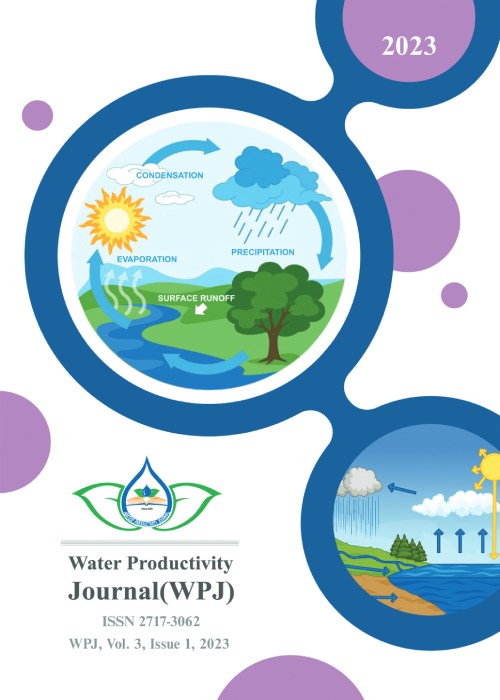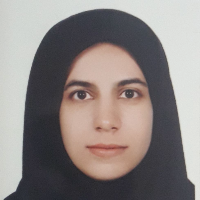Prediction of meteorological parameters of minimum and maximum temperatures in Zayandehrud basin using time series analysis
Iran is one of the countries in the world that needs water resources planning. In this research, the maximum and minimum temperatures in seven meteorological stations are analyzed and predicted. Time series analysis is a specific way of analyzing a sequence of data points collected over an interval of time. In time series analysis, analysts recorddata points at consistent intervals over a set period of time rather than just recordingthe data points intermittently or randomly. The purpose of this study is to use the time series method in predicting the maximum and minimum temperatures in the Zayandehrud basin, Isfahan, Iran.
The Zayandeh Rud River is the main supplier for drinking water to a population of over 4.5 million in the three provinces of Isfahan, Yazd, and Charmahal-Bakhtiari. It provides agricultural water for over 200,000 hectares, supplies water to several large industries, and is and the hub of tourism in the central plateau of Iran. This river used to have significant flow all year long, but today runs dry due to water extraction before reaching the city of Isfahan. Isfahan Province is located in the center of the Islamic Republic of Iran. The total area of the Isfahan province is 106179 square kilometers, approximately 6.25 percent of the total Iran area. The city lies in the lush Zayandeh Roud River plain of foothills of the Zagros Mountains Range. Isfahan is about 1580 meters high from the sea level. It has a mild climate. ZayandehRud River is the main source and element of the development and beauty of Isfahan. The river rises from the eastern slopes of the Zagros Mountain range. The city is located in the lush plain of the river ZayandehRud, at the foot of the Zagros mountains. Situated at 1.590 meters above sea level on the eastern side of the Zagros Mountains, Isfahan has a dry climate (Köppen BWk). Record Periods include 7 days, 15 days, 30 days, seasonal and daily time steps. The output data were demonstrated by box Diagram, Normal and Grubs Beck. The modeling was performed by examining the autocorrelation and partial autocorrelation diagrams and Akaike, Schwartz and Hanan Quinn criterias. Then normality was test by Kolmogorov-Smirnov and Jarque Bera tests. Durbin Watson and Pert Manto tests were used to check the accuracy of the model. The trend and homogeneity are analysed using MATLAB and the stationery and modeling are done using Minitab, Eviews software.
Maximum temperature (meteorological parameter) intervals of 7 days, 15 days, 30 days, seasonal, and daily, and as the number of data decreases, the amount of error increases, the data interval had an increasing trend in daily period. In the R2 criteria, all of the stations were above 0.7, and in terms of correctness, the model of Kabutarabad station had a better answer than all of the other stations. For this reason, this station was selected. In terms of the test that used for the normality of all of the stations, the results were similar, so that the daily time interval was skewness and kurtosis and the intervals of 7, 15 and 30 days and seasonal were examined for Kolmogorov Smirnov and Jarque bera tests. The percentage error was below than 20%. The models obtained for the intervals were as follows: for the 15 and 30 days intervals of Sarima and for the 7 days, seasonal and daily intervals of Arima.
For validation in the series with daily and 7days time intervals, 5% of data were considered, in 15days and 30days 10% of data, and seasonal 20% of data were considered. Trend was checked by Mann Kendall method and was observed only in daily time interval. The method of estimating the parameters is calculated from the least squares method. Also in modeling the maximum and minimum temperatures, mainly SARIMA model was fitted in 15days and 30days period and ARIMA in 7days and daily period and seasonal period. R2 was higher than 0.7 and the average squares error and error percentage was below 20%.The limitations of the project were as follows: One of the hypotheses was that the impact of artificial and human factors on the study data was negligible and the length of the period used is considered as a sample of the total statistical population of that station. It is recommended that firstly the effect of climate change on the prediction of results would be studied, secondly using wavelet in time series analysis, thirdly using and comparing ARCH and GARCH time series models.The minimum and maximum temperature has a large impact on evapotranspiration and farmland water consumption. Using time series analysis, both minimum and maximum temperatures could be predicted. Therefore, water consumption could be estimated for future crop management and having an efficient water productivity.
ARIMA , time series , Temperature , SARIMA , Zayandehrud , Isfahan
- حق عضویت دریافتی صرف حمایت از نشریات عضو و نگهداری، تکمیل و توسعه مگیران میشود.
- پرداخت حق اشتراک و دانلود مقالات اجازه بازنشر آن در سایر رسانههای چاپی و دیجیتال را به کاربر نمیدهد.



